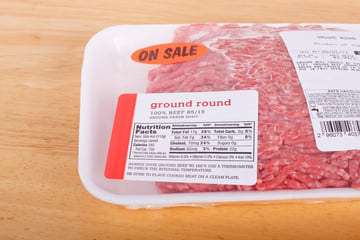There is some confusion about the difference between bioengineered (BE) ingredient disclosure and non-GMO labeling: What does each mean? What are the legal implications of both? What, if anything, does either have to do with the USDA Organic Standards? This blog will offer some clarity.
What’s the difference between bioengineered (BE) foods and Non-GMO?
The USDA established the National Bioengineered Food Disclosure Standard in response to consumer demand for more information about what is in the food we eat. The Standard defines bioengineered foods as those that contain detectable genetic material, and says that “any intentional use of a bioengineered ingredient requires disclosure.”
Non-GMO labeling, on the other hand, is a voluntary declaration indicating that a food does not contain any genetically modified organisms (GMOs). There is currently no state or federal government regulation that requires the declaration. The primary advocate for the declaration is the Non-GMO Project, a nonprofit “dedicated to building and protecting a non-GMO food supply.” They offer inspection and non-GMO certification.
Does BE mean something different from non-GMO?
Not really. The difference is how the terms are used legally.
Prior to the BE regulation, the term genetically modified organism or “GMO” was the primary term used by the public and food marketers. Essentially, genetically modified and bioengineered both indicate that a food item’s genetic material has been altered using non-traditional breeding techniques (ie; genetic engineering) for crop plants. The USDA uses this definition in the Standard:
” … a food (A) that contains genetic material that has been modified through in vitro recombinant deoxyribonucleic acid (DNA) techniques; and (B) for which the modification could not otherwise be obtained through conventional breeding or found in nature.”
What are the regulatory differences?
BE disclosure is federal law. Non-GMO labeling is not required by law.
As the BE Standard mandates, foods that contain BE material must say so on the packaging. This is a mandatory legal requirement and companies that don’t comply could face fines or other penalties. (Jan. 1, 2020, began the implementation period for the BE disclosure, with a mandatory compliance date of Jan. 1, 2022.) We have another blog that dives deeper into the BE Standard.
Non-GMO labeling, on the other hand, is neither required by law nor regulated by the FDA, except that the claim must not be deceptive. It is a voluntary declaration adopted by some companies for marketing and education purposes only.
What does this have to do with the USDA Organic Standards?
The Organic Standard and the BE Standard are two separate initiatives from the USDA, but Organic labeling cannot be used on foods that contain GMOs. As explained on their website: “Organic is a labeling term found on products that have been produced using cultural, biological, and mechanical practices that support the cycling of on-farm resources, promote ecological balance, and conserve biodiversity.”
The USDA has established national standards and a certification process for organically produced agricultural products, and any foods that use GMO ingredients will not qualify for the “USDA Organic” label. However, if a food has earned organic certification that food may claim that it’s “non-GMO” and is free of BE material.
How can ESHA help?
Our Genesis R&D Foods program has an Attribute feature that you can use to track BE material and declare it with either a seal or text. Watch our Attribute tutorial to learn how it works. We also have an excellent webinar on BE compliance that covers the regulations and the Genesis R&D features that will aid in compliance.
Other posts you might be interested in
View All Posts
19 min read
| September 12, 2022
Comparing USDA-FSIS and FDA’s Nutrition Facts Labels
Read More
Product Formulation
6 min read
| March 13, 2018
How Calories are Calculated in Different Countries
Read More
Food Labeling
21 min read
| April 27, 2023

